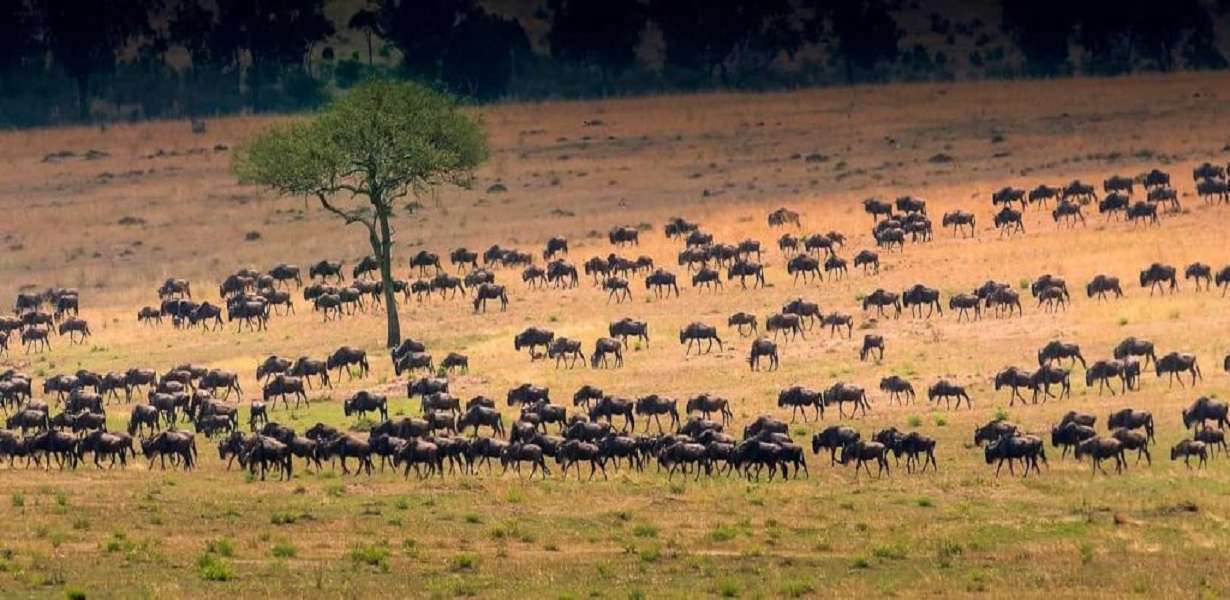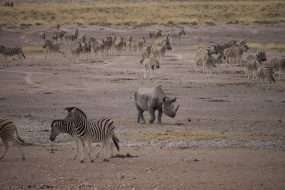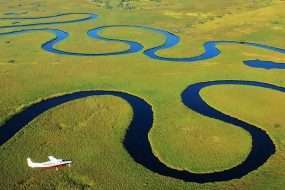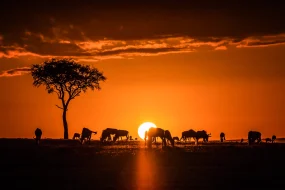
Welcome to the majestic Serengeti National Park, a wildlife paradise located in Tanzania. This expansive protected area is renowned for its breathtaking landscapes, diverse wildlife, and extraordinary safari experiences. In this article, we will delve into the wonders of the Serengeti, providing you with comprehensive information to make your visit truly unforgettable.
The Serengeti's Natural Beauty
The Serengeti National Park captivates visitors with its awe-inspiring natural beauty. Sprawling across approximately 14,750 square kilometers, this vast expanse of pristine wilderness encompasses open grasslands, dense woodlands, and scenic riverine areas. The park's diverse ecosystems provide a habitat for an incredible array of flora and fauna, creating a truly immersive and captivating environment.
Wildlife Encounters in the Serengeti
Prepare to be enchanted by the abundant wildlife that roams freely within the Serengeti National Park. As you embark on thrilling game drives, you'll have the opportunity to witness the famed “Big Five” – lions, elephants, buffalos, leopards, and rhinoceroses. Additionally, the Serengeti is home to numerous other iconic species, including cheetahs, giraffes, zebras, wildebeests, and hippos. Immerse yourself in the wonders of nature as you observe these magnificent creatures in their natural habitat.
The Great Wildebeest Migration
One of the most extraordinary spectacles on Earth, the Great Wildebeest Migration, takes place within the Serengeti National Park. Every year, millions of wildebeests, accompanied by zebras and gazelles, embark on a treacherous journey in search of greener pastures. Witnessing this awe-inspiring event is a once-in-a-lifetime experience. Follow the thundering hooves and witness river crossings teeming with adrenaline-pumping action as predators lurk nearby. The Great Wildebeest Migration showcases the raw power and resilience of nature.
FAQs
FAQ 1: When is the best time to visit the Serengeti?
The best time to visit the Serengeti National Park largely depends on the type of experience you are seeking. If witnessing the Great Wildebeest Migration is your priority, then the ideal time to visit is during the months of July to October when the herds are in the northern Serengeti. This period offers thrilling opportunities to witness river crossings and dramatic predator-prey interactions.
For those who prefer a quieter experience with fewer crowds, the months of January and February are recommended. During this time, the wildebeests gather in the southern Serengeti for calving season, and you can witness the adorable newborns taking their first steps.
It's important to note that the Serengeti's weather is generally pleasant year-round, with dry and wet seasons. The dry season, from June to October, offers clear skies and easier wildlife sightings. The wet season, from November to May, brings lush green landscapes and the opportunity to witness bird migrations and the birth of many animal species.
FAQ 2: How can I arrange a safari in the Serengeti?
Arranging a safari in the Serengeti can be done through various means. You have the option to book a safari package with a reputable tour operator who specializes in Tanzania safaris. They will handle all the logistics, including accommodations, transportation, and knowledgeable guides.
Another option is to plan a self-drive safari if you prefer more independence. Renting a 4×4 vehicle and obtaining the necessary permits will allow you to explore the park at your own pace. However, it's important to note that a self-drive safari requires thorough preparation, knowledge of the park's rules and regulations, and a sense of adventure.
Whether you choose a guided safari or a self-drive adventure, it's crucial to research and select a reliable operator or obtain comprehensive information on park rules and safety guidelines if you decide to explore on your own.
FAQ 3: Are there accommodations available within the park?
Yes, there are several accommodations available within the Serengeti National Park, catering to various preferences and budgets. These include luxury lodges, tented camps, and public campsites. Each offers a unique experience, allowing you to immerse yourself in the wild surroundings while enjoying comfortable amenities.
Luxury lodges provide lavish accommodations with spacious rooms, private decks, and exceptional dining options. Tented camps offer a more adventurous experience, allowing you to stay closer to nature while still enjoying modern conveniences. Public campsites provide basic facilities for those seeking a more budget-friendly option.
It's important to make reservations well in advance, especially during the peak seasons, to secure your preferred accommodation within the park.
FAQ 4: What are the park fees and permits required?
To enter the Serengeti National Park, visitors are required to pay park fees and obtain permits. The fees vary depending on your nationality, the duration of your stay, and whether you are visiting as a day visitor or staying overnight.
It's recommended to check with the official authorities or your tour operator to obtain accurate and up-to-date information on park fees and permits. They will guide you through the process and ensure compliance with the park's regulations.
FAQ 5: What other attractions are near the Serengeti National Park?
The Serengeti National Park is surrounded by other fascinating attractions that are worth exploring during your visit. Some of the notable nearby attractions include:
- Ngorongoro Conservation Area: Known for its stunning Ngorongoro Crater, this UNESCO World Heritage Site offers breathtaking landscapes and abundant wildlife. It's a great addition to your Serengeti safari.
- Tarangire National Park: Famous for its large elephant herds and picturesque baobab trees, Tarangire National Park is an excellent destination for wildlife enthusiasts. It is located to the southwest of the Serengeti.
- Lake Manyara National Park: Nestled at the foot of the Great Rift Valley, Lake Manyara National Park is renowned for its diverse birdlife, tree-climbing lions, and scenic landscapes. It's a relatively compact park and can be visited as a day trip from the Serengeti.
- Mount Kilimanjaro: If you're up for a challenge, consider embarking on a trek to the roof of Africa, Mount Kilimanjaro. This majestic peak offers a thrilling and rewarding adventure for those seeking a different kind of wilderness experience.
Exploring these nearby attractions will enrich your overall Tanzanian adventure and provide a well-rounded experience of the region's natural wonders.
Conclusion
The Serengeti National Park in Tanzania offers a remarkable journey into the heart of the African wilderness. With its breathtaking landscapes, abundant wildlife, and the captivating Great Wildebeest Migration, it is a destination that will leave you in awe. Immerse yourself in the wonders of nature, embark on exhilarating safaris, and create memories that will last a lifetime. Visit the Serengeti and experience the true essence of untamed beauty.










